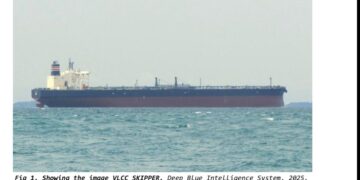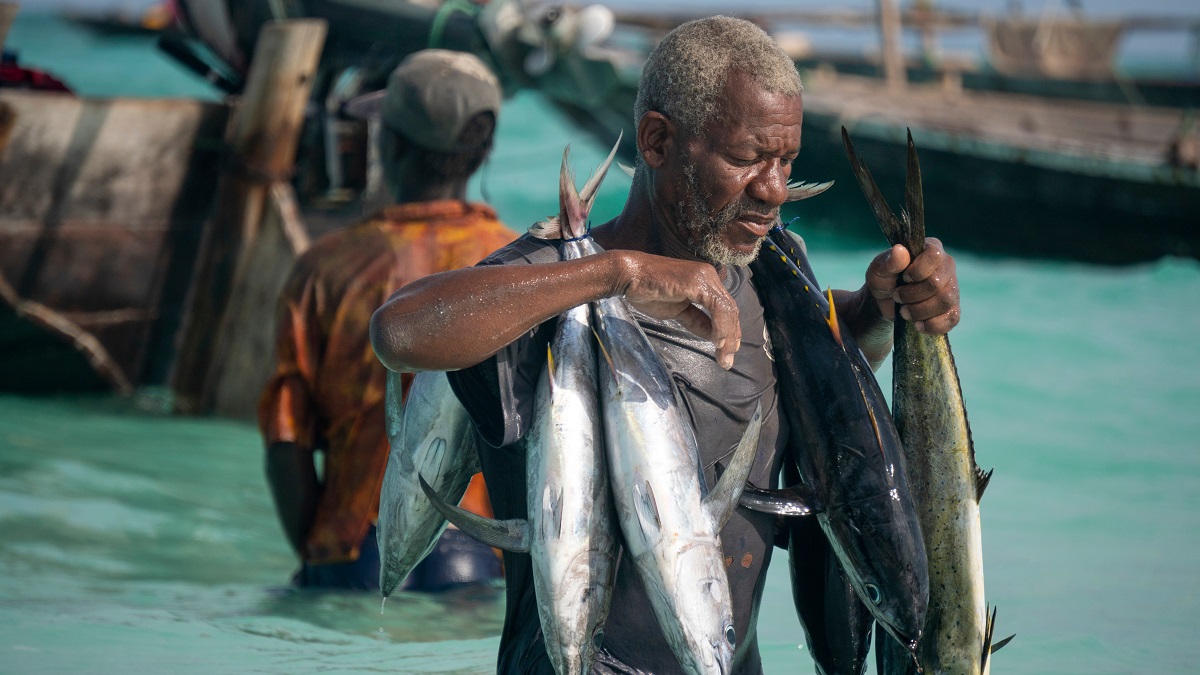A new UNCTAD database provides insight into the ocean economy’s sectors, main players and export opportunities for developing countries as they try to recover from the COVID-19 pandemic.
Trade in ocean-based goods showed remarkable resilience during the recession induced by COVID-19 in 2020, according to the latest available data from a new UNCTAD database.
Such goods include resources either sourced from the ocean, made from marine resources or manufactured for marine activities.
UNCTAD’s ocean trade database, released in April 2022, draws on official statistics from all UN member states.
It shows that trade in ocean-related goods fell by 3.2% in 2020 compared to 2019, faring better than both world trade in goods, which dropped by 5.3%, and trade in ocean-related services, which collapsed – for example, international tourist arrivals declined by 74% in 2020.
“The resilience of trade in ocean goods helped sustain millions of livelihoods amid the slowdown caused by the pandemic,” said David Vivas, an UNCTAD legal officer working on ocean economy issues.
Globally, more than 150 million direct jobs depend on the sound management and sustainable production, export, import and consumption of ocean-based goods and services. These jobs are found in fishing, aquaculture, shipping, coastal tourism, offshore wind energy and marine biotechnology.
How ocean sectors fared at height of COVID-19
Exports of ocean-based goods were worth at least $678 billion in 2020 in these sectors: high technology and other manufactured goods ($268 billion), ships, port equipment and parts ($257 billion), marine fisheries and aquaculture ($87 billion), seafood processing ($65 billion) and sea minerals ($1.4 billion).
UNCTAD’s analysis shows that the manufacturing sector represented 77% of exported ocean economy goods, reflecting its higher added value compared to the primary sector.
Trade in marine fisheries and aquaculture was the hardest hit sector, declining by 9.3% from $95 billion to $86 billion. As countries implemented COVID-19 lockdowns, restaurants closed and demand for fresh fish plummeted.
Trade in ships, port equipment and parts declined by 8.4% from $280 billion to $256 billion, echoing the 3.8% decline in maritime trade. Trade in sea minerals such as brine salt and sands fell by 5.1%.
By contrast, trade in processed seafood grew by 5%, boosted by higher demand for processed, sterilized and ready-made dishes during lockdowns.
The largest sector, trade in high technology and other manufactured goods, which include marine sports items, clean energy machinery, marine precision and navigation instruments, expanded by 2.6% from $321 billion to $337 billion.
Top exporters of ocean economy goods
Altogether, the European Union was by far the largest exporter of ocean-based goods in 2019 ($242 billion), followed by China ($113 billion) and the United States ($70 billion).
Given the pandemic’s exceptional circumstances, UNCTAD took 2019 as the year of reference for country and regional analyses.
For all leading exporters except Norway, manufactured goods made up the highest share of ocean-based exports.
High-tech manufactured goods put Switzerland, a landlocked nation, among the top 10 exporters due to exports of marine precision and navigation instruments as well as marine-based pharmaceuticals.
At the regional level, Asia and Europe dominated trade in ocean-based goods, each exporting close to $300 billion in 2019. Together, they represent 84% of the ocean economy’s exported goods.
North American exports trailed far behind the two frontrunners, accounting for 9% of total ocean economy goods in 2019, led by the United States ($65 billion). The last two regions were Latin America and the Caribbean ($30 billion) and Africa ($13 billion).
Developed countries exported 63% of ocean economy goods in 2019, while developing economies exported 37%, in large part due to China, which accounted for 16% of world exports.
Least developed countries (LDCs) and small island developing states (SIDS) together represented less than 0.5% of total exported goods, mainly frozen fish and some processed products.
Opportunities for developing countries
“Developing countries can seize greater benefits of ocean trade by shifting from exporting primary commodities to niche value-added ocean-based goods,” Mr. Vivas said.
Such value-added goods include marine-based foods, nutraceuticals and cosmetics, seaweed fibres and biofuels, marine sports products, fishing boats, small transport boats and ships’ parts.
In terms of primary commodities, UNCTAD’s analysis shows that exports of some fisheries and marine aquaculture are more valuable in terms of trade flows than those of processed seafood.
“But processed seafood constitutes an important opportunity for developing countries to improve food security and increase the shelf life of their catch, thus facilitating sales in distant countries and their added value,” Mr. Vivas said.
The UNCTAD database reveals that most marine fisheries’ exports remain confined to a few developed countries and one developing country with large fishing fleets.
Mr. Vivas said the recently adopted WTO agreement on fisheries subsidies and its built-in agenda could help address some of these imbalances. But developing countries will need support to implement and comply with the agreement’s obligations to foster development.
To address the need, UNCTAD continues to support developing countries, especially SIDS and LDCs, to benefit from export opportunities in ocean-based sectors.
It will expand and update the database with data on ocean services such as tourism, transport, port services, coastal and marine environmental services, research and development.
Credit: UNCTAD






























































